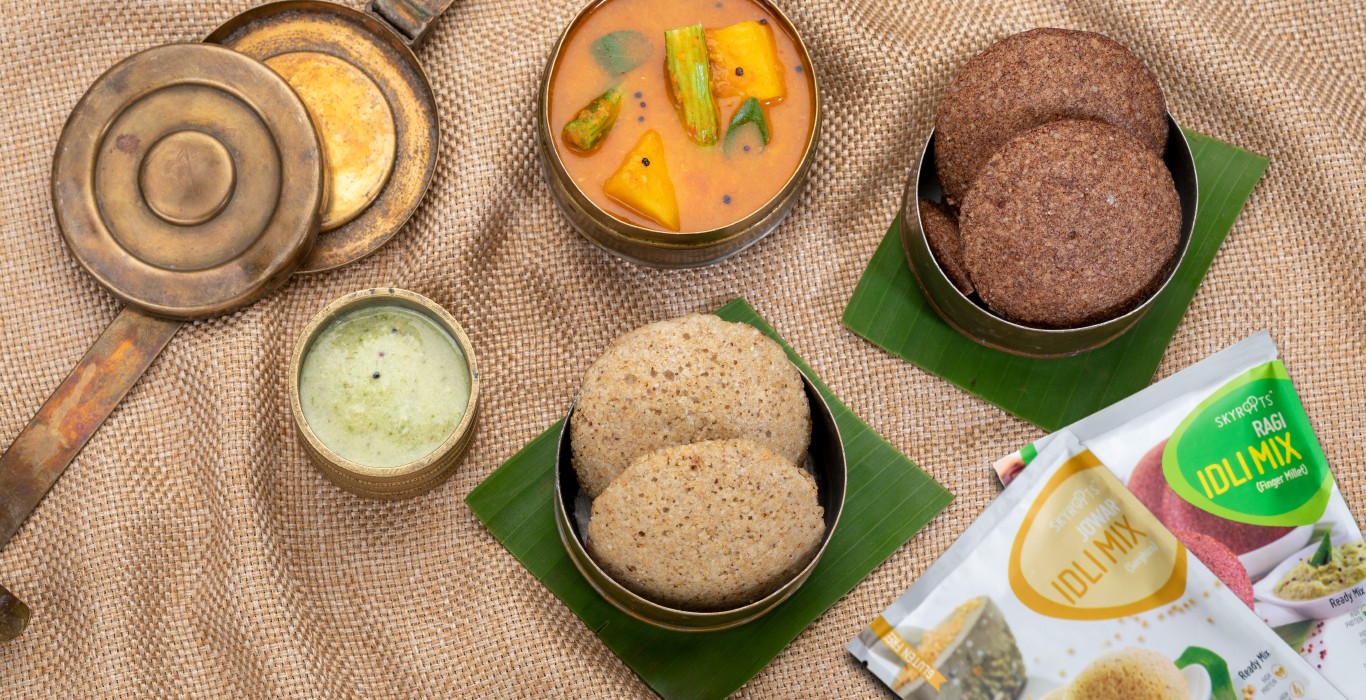Today, as eat local and go local is becoming the new norm, it is time to look inward and take a peek into the history to understand the local food of India. Local food is not just good for our health but it is also good for the environment as it has a lower carbon footprint.
One of the oldest grains known and cultivated in India is millet. About 10,000 years ago, the consumption of millets was widespread in India. But as the food globalization took center stage, the local millets were sidelined. The pandemic induced health and immunity focus has put the spotlight back on millets. Millets are the most nutritious and healthy grains. They are a powerhouse of vitamins and minerals.
Let’s see the benefits of millets when you add them to your meals:
- Millet provides a high amount of energy without adding more calories and without disturbing your insulin levels.
- Millets are known as SMART carbs. Do you know why? It is because it is high in fiber, low in sugar levels, high in nutrition, and low in the glycemic index.
- It also helps to lower your blood sugar levels as it releases sugar slowly. Millets also promote better glucose absorption by the body. This is a major reason why many are replacing wheat or rice with millets.
However, we suggest that instead of removing a particular component from our daily meals, it is better to balance it by alternating the food groups in our daily meal plan.
Top 8 millets to add to your meals are:
- Barnyard millet – They are also called Samvat Rice/Sawa Rice. They are rich in carbohydrates, magnesium, protein, calcium, thiamin, vitamins, iron, phosphorus, fiber, and riboflavin.
- Foxtail millet – Foxtail millets or Kangani is rich in Vitamin B12. They also provide the daily dose of protein, good fat, carbohydrates and dietary fiber.
- Finger millet – Finger millet is also called as Ragi and is rich in protein, calcium, magnesium, iron, phosphorous, vitamins, dietary fibers and zinc.
- Little millet – It is a great addition to a meal as little millets are packed with nutrients like proteins, fiber, calcium, phosphorus, iron and carbohydrates.
- Pearl millet – It is called Bajara in hindi and is loaded with protein, fibers, carbohydrates, sodium, folate and iron.
- Proso millet – It has high lecithin, that supports neural health system. It is also rich in vitamins, minerals and essential amino acids.
- Kudu millet – Kudu too has high lecithin and protein. It also provides carbs necessary for the body.
- Sorghum – This millet is rich in iron, vitamins, magnesium and copper. It also contains a significant amount of phosphorus, potassium, zinc, and thiamine.
Studies have shown that the digestion of millet is very easy as compared to wheat and rice. In fact, millets act as food for micro flora in your gut, and gut ecosystem allowing them to thrive and balance the digestive tract. It also ensures that the colon is well hydrated and the bowel movement is regular; so when you have constipation, always opt for millets rather than wheat, which mainly causes constipation.
Ways to add millets to your meal
- If you are constipated or do not lead an active life, then replace wheat with millets. This is because the gluten in wheat is a major reason for constipation for people with sedentary lifestyle.
- Always roast millets before grinding them into a paste or flour. This helps retain the protein content in it. You can then make dosa/idli batter or dry flours to make rotis.
- Once the millets are ground, they can be used to make cookies, bread, roti, bhakri, paratha, soup, namkeens, finger food for babies, millet dosa, uttapam, idli, appe, etc .
- Millets porridge and upma too are tasty and hassle free snacks.
Final Word on adding millets to your meal
Millets are nutritionally balanced and adding millets to your meals helps to balance your meals with higher nutritional value.
Did you Know – Millets are rich in Magnesium and magnesium helps to reduce the effects of migraine?
Its pact with vitamin B3 (Niacin), helps to play a major role in reducing your cholesterol. Phosphorus in millets aids in fat metabolism, body tissue repair, and creating energy. Studies show that millet also helps to stimulate serotonin levels, which helps to calm your mind and soothe your mood. We hope you will start including millets in your diet. After all, with so many benefits, it is impossible to ignore millets.







